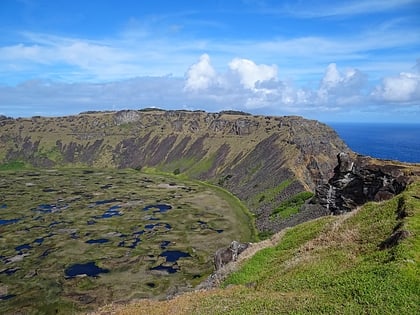Rano Kau, Rapa Nui National Park
#5 among attractions in Rapa Nui National Park

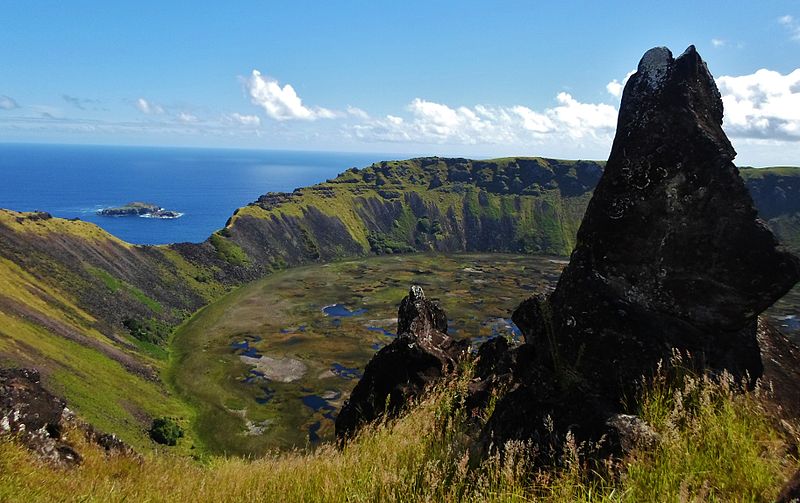
Facts and practical information
Rano Kau is a 324 m tall dormant volcano that forms the southwestern headland of Easter Island, a Chilean island in the Pacific Ocean. It was formed of basaltic lava flows in the Pleistocene with its youngest rocks dated at between 150,000 and 210,000 years ago. ()
Rano Kau – popular in the area (distance from the attraction)
Nearby attractions include: Ana Kai Tangata, Tahai Ceremonial Complex, Orongo, Puna Pau.
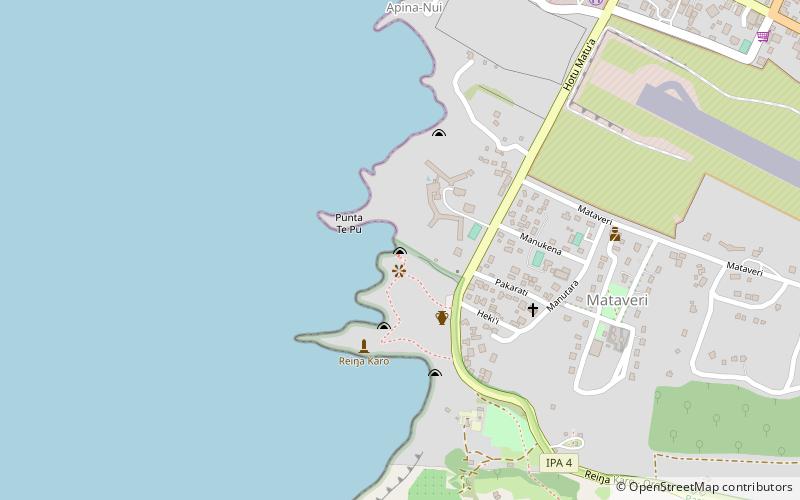 Cave
CaveAna Kai Tangata, Hanga Roa
35 min walk • Ana Kai Tangata is a sea cave in Easter Island that contains rock art of terns on its ceiling. It is located near Mataveri, and the cave opens up directly to the incoming surf. The cave is accessible and one of the most visited caves in Easter Island.
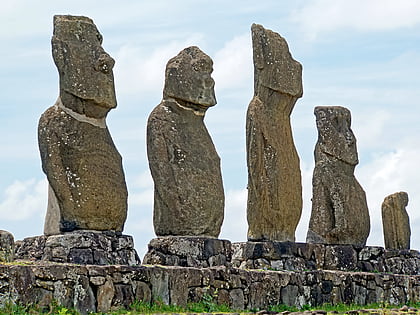 Historical place, Archaeological site, Sculpture
Historical place, Archaeological site, SculptureTahai Ceremonial Complex, Hanga Roa
68 min walk • Nestled on the remote Easter Island, known locally as Rapa Nui, lies the Tahai Ceremonial Complex, a testament to the island's enigmatic past. Located in the city of Hanga Roa, this archaeological site offers visitors a glimpse into the ancient Rapa Nui civilization...
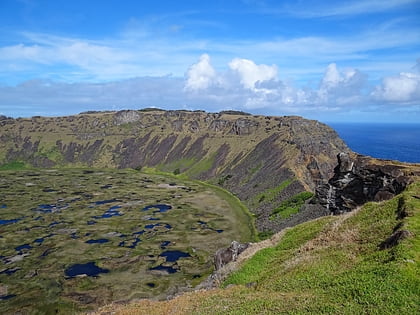 Archaeological site, Historical place, Body of water
Archaeological site, Historical place, Body of waterOrongo, Rapa Nui National Park
28 min walk • ꞌOrongo is a stone village and ceremonial center at the southwestern tip of Rapa Nui. It consists of a collection of low, sod-covered, windowless, round-walled buildings with even lower doors positioned on the high south-westerly tip of the large volcanic caldera called Rano Kau.
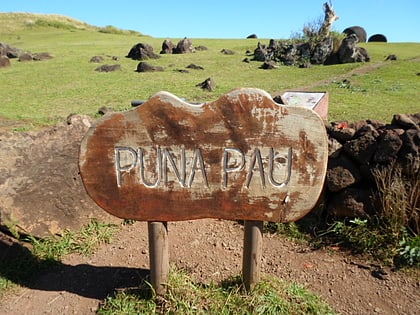 Archaeological site
Archaeological sitePuna Pau, Hanga Roa
67 min walk • Maunga Puna Pau is a small crater or cinder cone and prehistoric quarry on the outskirts of Hanga Roa in the south west of Easter Island. Puna Pau gives its name to one of the seven regions of the Rapa Nui National Park.
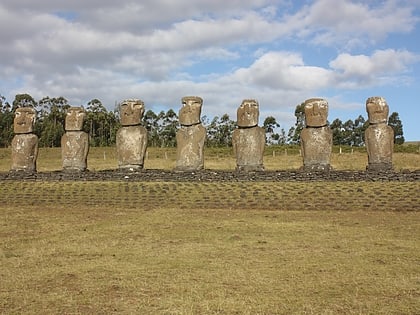 Archaeological site, Sculpture, Historical place
Archaeological site, Sculpture, Historical placeAhu Akivi, Rapa Nui National Park
125 min walk • Ahu Akivi is a particular sacred place on the Chilean island of Rapa Nui, looking out towards the Pacific Ocean. The site has seven moai, all of equal shape and size, and is also known as a celestial observatory that was set up around the 16th century.
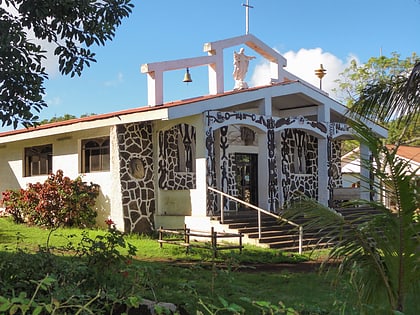 Church
ChurchHoly Cross Church, Hanga Roa
54 min walk • The Holy Cross Church, also known as Hanga Roa Church or simply Catholic Church of Hanga Roa is the name of the religious building affiliated with the Catholic Church in the "Te Pito Te Henua" Street in the city of Hanga Roa, the capital and greater city of the Easter Island, a Territory of Chile in the Pacific Ocean.
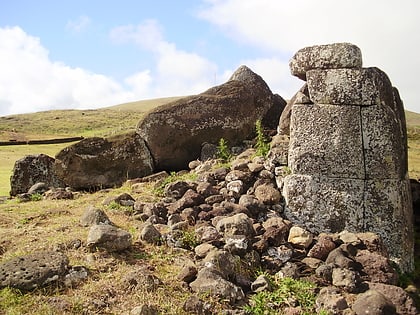 Archaeological site, Ruins, Historical place
Archaeological site, Ruins, Historical placeAhu Vinapu, Rapa Nui National Park
38 min walk • Ahu Vinapu is an archaeological site on Rapa Nui in Eastern Polynesia. The ceremonial center of Vinapu includes one of the larger ahu on Rapa Nui. The ahu exhibits extraordinary stonemasonry consisting of large, carefully fitted slabs of basalt. The American archaeologist, William Mulloy investigated the site in 1958.
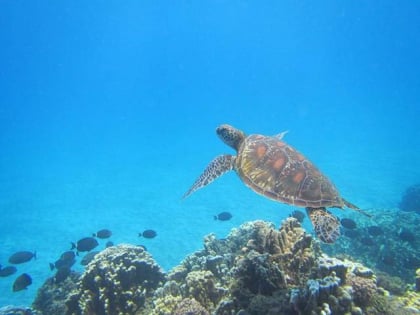 27°9'15"S • 109°26'20"W
27°9'15"S • 109°26'20"WCaleta Hanga Piko, Hanga Roa
45 min walk • Sailing, Scuba and snorkeling, Historical and heritage tours
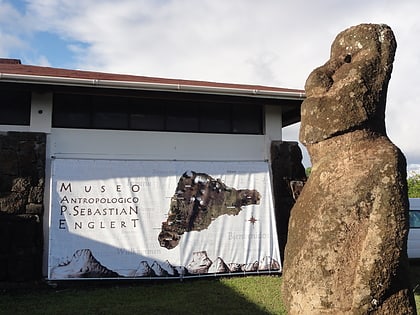 Specialty museum, Museum, History museum
Specialty museum, Museum, History museumMuseo Antropológico Padre Sebastián Englert, Hanga Roa
73 min walk • The Father Sebastian Englert Anthropological Museum is a museum in the town of Hanga Roa on Rapa Nui in Chilean Polynesia. Named for the Bavarian missionary, Fr.
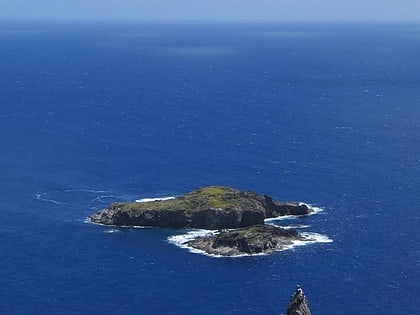 Island
IslandMotu Iti, Rapa Nui National Park
50 min walk • Motu Iti, or Little island in the Rapa Nui language, is a small uninhabited islet near Motu Nui, about a mile from Rano Kau on the south western corner of Easter Island, a Chilean island in the Pacific.
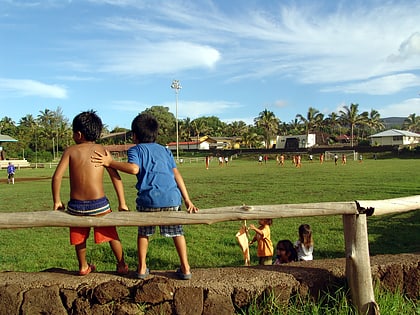 Football, Arenas and stadiums, Sport venue
Football, Arenas and stadiums, Sport venueHanga Roa Stadium
55 min walk • The Hanga Roa Stadium is a football stadium in Hanga Roa, the capital Easter Island a territory of Chile. It is the home ground of the CF Rapa Nui, the Easter Island football team. The stadium holds about 1,000 people.
